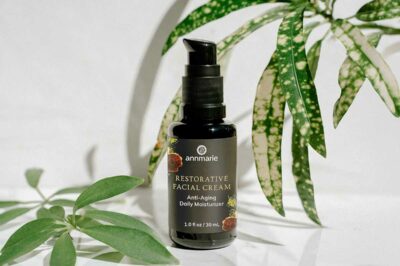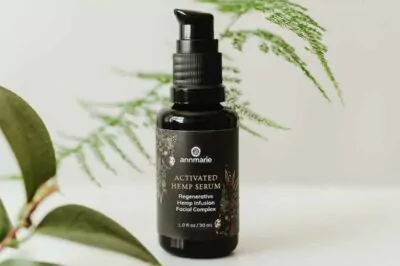You spread it on your skin, shave, and rinse it off. So why would you need to worry about what’s in your shave gel?
Your skin is vulnerable during shaving. You’ve applied warm water to soften the hairs, which opens your pores, allowing more of whatever is resting on the surface of your skin to sink deeper into it. Then you shave, exfoliating the outer layer and revealing new, fresh skin underneath that is more tender and vulnerable to the elements outside—including your shave gel.
Unfortunately, many over-the-counter products contain potentially harmful chemicals that may not be good for your skin or your health. Here’s more on what ingredients to avoid, and how to find safer products.
Shaving gels and creams are often full of potentially harmful chemicals—why take the risk when you can make safer choices?
Ingredients to Avoid in Shave Gels
To give you a general guideline, we’ve included several chemicals below that you want to look for when reading the ingredient deck on the back of any shave gel or cream. But if all the chemical names seem a bit overwhelming, remember this—companies who are conscientious about what they’re using in their products aren’t going to use ingredients like these. Look for the companies that use more natural ingredients and you’ll be more likely to avoid all the nasty stuff!
- Triethanolamine (TEA): This ingredient, along with cousins DEA (diethanolamine) and MEA (monoethanolamine), are often found in products that foam, including shave creams and gels. They have been linked with hormone disruption, and can form cancer-causing nitrates and nitrosamines. They can also be readily absorbed in the skin.
- Fragrance: If you see this on the product you just don’t know what you’re getting. Companies don’t have to reveal what’s in their fragrances—they’re protected as “trade secret”—so you could be exposing yourself to as many as 200 unknown chemicals. Fragrances are one of the most common allergens, and have also been linked with headaches, dizziness, rashes, and skin irritation.
- Palmitic acid: An emulsifier—which keeps formulas evenly mixed—this ingredient has been linked with contact dermatitis, an allergic reaction in the skin.
- Isopentane: A solvent that helps some ingredients dissolve into others, isopentane can also cause dry skin, contact dermatitis, dizziness, headaches, and nose and throat irritation.
- Glycols: These chemicals include things like propylene glycol, butylene glycol, and ethylene glycol. They help the skin retain and absorb moisture, and allow liquids to spread more evenly. They’ve also been linked with dry skin, rashes, and dermatitis, and high levels may contribute to blood and kidney disorders.
- Sulfates (or sulphates): These are harsh, corrosive products, but they’re present in a number of personal care products. You’ll see them listed as sodium lauryl sulfate, sodium laureth sulfate, or ammonium lauryl sulfate, or by the abbreviations SLS or SLES. They are included as cleansing ingredients, or to help the product foam, but have been linked with dry skin, rashes, dermatitis, and impaired hair growth.
- Polytetrafluoroethylene: This is the same chemical used to make Teflon, the non-stick stuff in cookware that has been linked with a number of health problems including osteoarthritis, heart disease, early-onset menopause, and breast cancer. You’ll find it in some shave gels (often as “PTFE”). Though not overly dangerous when applied topically—the chemical needs to be heated before it releases toxic fumes—it’s still not the most comforting ingredient to be applying to your skin.
- BHT (butylated hydroxytoluene): This chemical is a toluene-based ingredient (toluene was rated 37th most toxic chemical by the federal Agency for Toxic Substances and Disease Registry in 1992) used as a preservative in personal care products like shaving gels. It’s been linked with skin, eye, and lung irritation, hormone disruption, and has been shown to be potentially carcinogenic in animal studies.
There are other chemical ingredients in your shave gel that likely aren’t good for you, and could be potentially bad for you. But these are the main ones you can look for the next time you go shopping.
Why Take the Risk?
Can all these chemicals really do you much harm when you just rinse them down the drain? The problem is that most men, and many women, shave every day. That’s a lot of repeated exposure to ingredients that could cause skin dryness and shaving irritation—why put up with that?
Dryness and shaving irritation can lead to premature aging, making fine lines and wrinkles more noticeable than they would be if you were taking better care of your skin. Long-term exposure to these chemicals could also cause other health issues. We just don’t know at this point, but when there are other options available, why take the risk?
Here are some tips for finding more natural products, or for making some yourself. It really is easy to take better care of your skin while you shave.
- Read labels: Ignore whatever is on the front of the product, as that is all marketing hype. Since manufacturers know people like natural ingredients, some are throwing a bit of aloe into the formula, then pasting “aloe” all over the front of the product so you think it’s all natural. Always turn the product over and read the back.
- First 5: The first 4-5 ingredients make up the majority of your formula. Some brands throw in an essential oil and advertise it all over the front of the can, but then when you turn the product over, you find that the oil is the third-from-the-last ingredient. That means there’s hardly any in there. Focus most of your attention on the first five ingredients and that will give you the basic story on that product.
- Free: Look for this word on your products. Manufacturers may say “fragrance-free” or “sulfate-free.” This is a good start. There may still be a lot of other potentially harmful ingredients, however, so be sure to read the ingredient label.
- Make it yourself: You can try making your own shave cream. There are a number of recipes on the Internet that involve the use of ingredients like sweet almond (or other) oil, shea butter, baking soda, castile soap, aloe vera gel, honey, and essential oils. You may like it so much you’ll never buy store-bought again!
- Natural oils: Look for ingredients like natural essential oils. Some that are great moisturizers in shave creams include jojoba, coconut, sesame, soybean, olive, and macadamia seed. Other oils like chamomile and aloe are soothing and healing.
- Organic brands: Many organic brands of personal care products make shave creams that have a lot more truly nourishing ingredients than those you may find at the grocery store. Find a brand you like and see if they have a shave cream or gel.
- Can you pronounce it? Read a label from an Annmarie Skin Care product and you’ll read things like aloe vera gel, milk thistle seed, calendula flowers, and other things you’re most likely to recognize. Contrast that with a chemical ingredient list that contains mostly things you can’t pronounce. Not all chemicals are potentially harmful, but try to find formulas that contain more natural ingredients than chemical and you’ll be making a safer choice.
By the way, if you’d like a nice, non-toxic Annmarie Skin Care option to use for shaving, try our Rosemary Peppermint Body Wash. Let us know how it works for you.
Will you make safer choices in your shaving cream or gel? Please share your thoughts.








I’ve used Edge Shave Gel and it caused magenta color stains on towel and wash clothe. Anyone know what chemical ingredient(s) would be the cause?
I am just using up my last tin of shaving foam, ptfe is listed in the ingredients. This is a microplastic, back to plain old soap for me
I switched from canned shaving gel to the safe and beneficial products several years ago. The difference is like night and day – much closer and more comfortable shaves and without the worry of harmful chemicals.
There are many artisan soapmakers that have excellent shaving creams and soaps. They can easily be found by googling on “creams soaps traditional wet shaving artisan”. What surprises me is that Annamarie does not sell shaving cream. Why don’t you make a shaving cream or soap? There is a huge and rapidly growing market for such shaving products, with companies such as yours especially favored. With the obvious care you put into your offerings, an Annamarie shaving cream would be a great success.That unfortunate fellow in the article’s photo, and millions of other people, need a shout-out. Then they can get their wildcrafted, nature-connected, chemical-free, baby-bottom-smooth mojo going.
Thank you so much, I’ve always been weary of Energizer battery company simultaneously manufacturing the neat spreads we apply to our faces and bodies. We’ve all heard about the dangers of battery acid and obviously just seeing ingredients like these has raised my concerns, I’ve wondered deeper into possibilities of leftover ingredients being applied to health products to save money and production efforts. This is the most informative article I’ve found throughout all my digging on the subject and I finally feel content knowing that, at the very least, somebody has cared enough to ask the same questions and delve into the same concerns that I have.
Energizer acquired their shave gel brands from the SC Johnson company. I don’t think they would put battery acid in the shave gel.